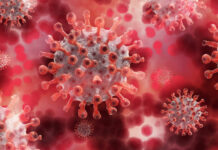
You’ve probably seen the news coverage of a surge in pneumonia cases among children in China that backed up emergency rooms. Now there are similar unexplained outbreaks in Europe. 80 of every 100,000 children in the Netherlands came down with this illness last week, and it isn’t even peak flu season yet.
In addition to the high rate of cases, what makes this disease unusual is that they have found no new or unusual pathogen. While this illness does not yet have its own name, it presents as pneumonia without coughing.
Taiwan, India and Vietnam are preparing for the outbreak to reach them from China. Maybe other parts of Asia and Europe should prepare as well.
Pneumonia versus COVID, RSV and the Flu
Coming on the heels of COVID, the world seems more finely attuned to news about respiratory illnesses, but the pneumonia doesn’t seem as threatening (yet). We’re seeing report of hospitalizations, not deaths. It may be that we have experience treating pneumonia, while COVID was novel and doctors lacked experience and treatment regimens in the early days of the outbreak.
Some are blaming the COVID lockdowns for the sudden prevalence of respiratory illnesses, claiming the lack of exposure to germs over the lockdown weakened the immune system. They attribute this to last year’s bad Respiratory Syncytial Virus (RSV ) season. Might as well blame it on people not going outdoors and over-using hand sanitizer. It’s been long understood that we build a strong immune system through low-level exposure to common bacteria and viruses.
Just a few short years ago, the flu was what we all tried to avoid in the winter months. Now it seems to have fallen to third place, behind COVID and RSV. Just as the flu is responsible for some deaths each year, COVID will continue to cause some deaths in the future, but nowhere near as many as it did at the peak of the outbreak.
Sadly, all three illnesses can kill the elderly and those with compromised or weak immune systems. If you don’t fall into that category, then you may be bed ridden for a few days and week for a couple weeks afterwards, but you’ll get over it. The COVID scare is behind us as the virus has weakened.
Stock Your Prepper Med Kit
While I don’t think this outbreak is anything you should worry about, you should monitor and track it to ensure it doesn’t grow more dangerous or closer to home. Itis also be a good reminder to add OTC treatments to your medical kit.
I regularly carry a tourniquet and my tactical med kit has pressure bandages, gauze for wound packing, QuikClot, and chest seals. Many people who carry guns have similar IFAKs to treat gunshot wounds. However, the majority of us are far more likely to get the flu, RSV or COVID than you are to get shot, so make sure your basic med kit and your larger home or base-camp kit has common OTC drugs to treat a cold or the flu.
For example, my EDC first aid kit also has ibuprofen, Alka-Seltzer Plus cold tablets, an antihistamine, anti-diarrheal pills, Band-Ads, triple antibiotic cream, cough drops, and tweezers. It also includes a couple rolls of vet-wrap self-adhesive bandages, an elastic bandage, and a roll of athletic tape. This allows me to treat minor cuts, scrapes, sprains, strains and similar injuries as well as fevers, cold and flu. The goal of this kit is to patch someone up or hold off the worst symptoms until we can get home or to a medical provider.
At home, we have an even more robust kit with thermometers, different sizes of sutures, neck braces, finger splints, knee braces, rubbing alcohol, hydrogen peroxide, betadine solution, blood pressure cuff, stethoscope, and all sorts of OTC medications for cold and flu.
Consider buying your favorite NSAID, decongestant, expectorant, cough suppressant, and other OTC meds before there is a run on them and empty shelves. It can’t hurt, and if you check your medicine cabinet, the expiration dates on some of the drugs might surprise you.






